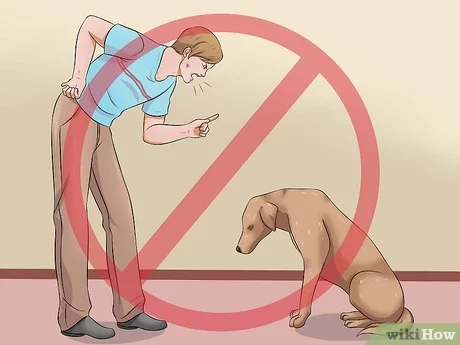What Does It Mean When A Dog Snorts
Dogs are known for their unique behavior, which can be both adorable and puzzling at the same time. Among these behaviors is snorting, which can be interpreted in a variety of ways depending on the context and the dog’s body language. In this article, we will explore what it means when a dog snorts and how to interpret this behavior.
Subtitles:
– What is Snorting in Dogs?
– Reasons why dogs snort
– Snorting as an expression of emotion
– How to identify different types of snorts
– Can snorting be harmful to your dog’s health?
What is Snorting in Dogs?
Snorting is a sound that dogs make when they inhale air through their nose quickly, causing a sudden expulsion of breath. It’s similar to a human sneeze but without the forceful exhalation. This behavior can occur spontaneously or intentionally, depending on the situation and the dog’s emotional state.
Reasons why dogs snort
There are several reasons why dogs snort, ranging from harmless to potentially concerning. Here are some of the most common reasons:
1. Playfulness: Some dogs may snort as part of their play behavior with other dogs or humans. It’s usually accompanied by other playful actions such as wagging tail and excited barks.
2. Irritation: Dogs may also snort if they have something stuck in their nose, such as dirt, dust, or pollen. This can cause discomfort and irritation, leading them to try to remove it by snorting.
3. Allergies: Just like humans, dogs can suffer from allergies that cause symptoms such as sneezing, coughing, and snorting. Common allergens include pollen, mold spores, and dust mites.
4. Medical conditions: In some cases, snorting can be a symptom of an underlying medical condition such as respiratory infections, nasal tumors, or brachycephalic syndrome. This is more common in certain breeds such as bulldogs, pugs, and Boston terriers.
Snorting as an expression of emotion
Dogs are known for their ability to express a wide range of emotions through their body language and vocalizations. Snorting is no exception, as it can be used to communicate different emotional states. Here are some examples:
1. Happiness: Dogs may snort when they’re happy and relaxed, especially during playtime or when cuddling with their owners. It can be a sign of contentment and pleasure.
2. Anxiety: On the other hand, dogs may also snort when they’re feeling anxious or stressed. This can happen in situations that make them uncomfortable or fearful, such as meeting new people or being in a crowded place.
3. Aggression: In rare cases, dogs may snort as part of their aggressive behavior towards other dogs or humans. It’s usually accompanied by other warning signs such as growling, barking, and showing teeth.
How to identify different types of snorts
Just like human speech, dog snorts can have different meanings depending on the tone and context. Here are some examples of different types of snorts and what they might mean:
1. Playful snort: This is a high-pitched, short sound that dogs make when they’re playing and having fun. It’s usually accompanied by playful body language such as jumping, wagging tail, and bowing.
2. Irritated snort: This is a louder, more forceful sound that dogs make when they’re trying to clear their nose from something irritating. It’s often accompanied by pawing at the nose or sneezing.
3. Anxious snort: This is a rapid, repetitive sound that dogs make when they’re feeling anxious or stressed. It can be accompanied by other signs of anxiety such as panting, trembling, and avoiding eye contact.
4. Aggressive snort: This is a low, guttural sound that dogs make when they’re feeling threatened or defensive. It’s usually accompanied by other warning signs such as growling, barking, and showing teeth.
Can snorting be harmful to your dog’s health?
In most cases, snorting is a harmless behavior that dogs use to communicate or clear their nose from irritants. However, in some cases, it can be a sign of an underlying medical condition that requires treatment. Here are some examples:
1. Respiratory infections: Dogs who snort frequently may be suffering from respiratory infections such as kennel cough or pneumonia. These conditions require veterinary care and may involve antibiotics or other medications.
2. Nasal tumors: In rare cases, dogs who snort persistently may have nasal tumors that obstruct their airways and cause breathing difficulties. This requires prompt diagnosis and treatment by a veterinarian.
3. Brachycephalic syndrome: Breeds with flat faces such as bulldogs, pugs, and Boston terriers are prone to brachycephalic syndrome, which involves narrowing of the airways and breathing difficulties. This can cause snorting and other respiratory symptoms that require management by a veterinarian.
In conclusion, snorting is a common behavior among dogs that can have different meanings depending on the context and the dog’s emotional state. By understanding what causes snorting and how to interpret it, you can better communicate with your furry friend and ensure their health and well-being. So next time your dog snorts, take note of the situation and body language to understand what they’re trying to tell you – it might just be their way of saying “I love you”!



